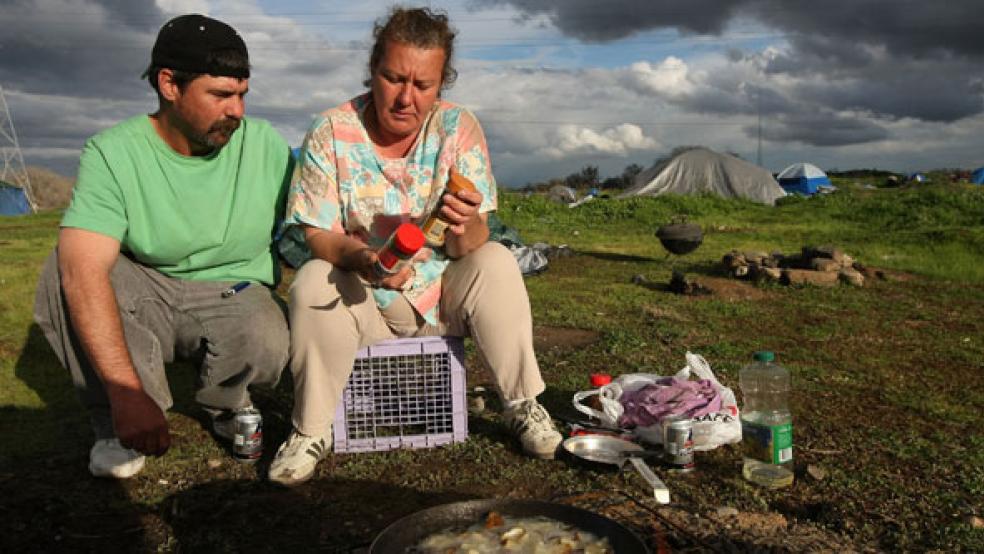The Census Bureau on Monday unveiled a rough draft of an update to the government poverty measure, incorporating the value of programs to feed, house, and provide heating assistance for the poor while recognizing the costs of what it takes to make it in modern society, such as health care and child care.
The result was that the proportion of people who fit the expanded definition of poverty increased, with a slight decline in the number of children living in poverty being offset by increases in both the working-age and senior populations.
Advocates on both sides of Washington’s ideological divide pounced on the results. Poor peoples’ advocates championed the success of programs like food stamps and the earned income tax credit in alleviating poverty and pointed to last year’s sharp increase in the poverty ranks as a reason to avoid slashing those programs in the next round of budget cuts.
“It shows the success of a lot of programs that are on the chopping block,” said Arloc Sherman, a senior researcher at the Center for Budget and Policy Priorities. “If you took out all the government policies, cash and in-kind, the poverty rate would be nearly double.”
But conservative critics lambasted the effort to update the poverty indicator, calling the revised product a measure of the income gap rather than an accurate portrayal of economic hardship. “When the American people hear the word poverty, they think about deprivation,” said Robert Rector, a senior research fellow at the Heritage Foundation, which frequently criticizes government aid programs to the poor. “Most poor families have air conditioners, microwaves, and cable or satellite TV. Very few people think that family is poor.”
The official poverty rate, which is used to calculate the benefits in more than two dozen government programs, rose to 15.1 percent in 2010 from 14.3 percent in 2009. An estimated 46.2 million people lived in poverty last year, 2.6 million more than the prior year, according to the traditional measure.
But under the supplemental poverty measure being developed by the Census Bureau, the poverty rate last year would have been 16 percent. The number of children under 18 living in poverty would have dropped from 22.5 percent to 18.2 percent of the population, while the number of elderly living in poverty would have increased to 15.9 percent from 9 percent.
The children’s poverty rate would decline largely because of benefits from the Children’s Health Insurance Program and supplemental nutrition programs like free school lunches and food stamps, experts said. The jump in elderly poverty was largely a result of out-of-pocket health-care costs. Many low-income seniors do not have supplemental insurance for Medicare, which usually only pays about 80 percent of bills.
The official poverty rate began as a back-of-the-envelope calculation inside the Lyndon Johnson administration in the mid-1960s when it launched the War on Poverty. It has been revised several times to incorporate the value of newly enacted assistance programs.
But a 1995 report from the National Academy of Sciences lambasted the poverty measure and called for revisions. It said the existing measure failed to consider the value of in-kind benefits, the changed family structure, necessary expenses like taxes and health care, and the geographic price differentials between regions.
The experimental measure, which will not be used for distributing government benefits, incorporated a number of those changes, which wound up pushing poverty in both directions. While it now includes out-of-pocket health care costs in its calculations, for instance, it also makes adjustments for housing based on whether the family rents or owns and whether it has a mortgage. This would tend to depress poverty counts in rural areas of the country, where many low-income people live in houses they own outright.
And that is one reason, poverty experts say, why there is little chance that Congress will even consider legislation making the new measure the basis for programs that rely on poverty rates when distributing dollars. “It’s congressionally dead because it would redistribute the money from rural areas, the Midwest, and South to more expensive areas,” said Timothy Smeeding, director of the Institute for Research on Poverty at the University of Wisconsin. “If I’m a senator from one of those states, my constituents are going to lose money.”
Programs that rely on the poverty measure when determining grants include Head Start, Low-Income Home Energy Assistance, parts of Medicare and Medicaid, and Supplemental Nutrition Assistance (food stamps). If and when health-care reform goes into effect, subsidies available to poorer families under the state-based exchanges will also use a family’s income in relationship to the poverty line to determine the level of subsidy.
On the other hand, a number of programs that are counted as income when calculating poverty rates under both the new and old measures do not use the official poverty level when determining need. Temporary assistance for needy families, the earned income tax credit, and low-income rent subsidies, for instance, are handed out when total household income falls below a certain point and are not dependent on a family’s relationship to the official poverty line.





